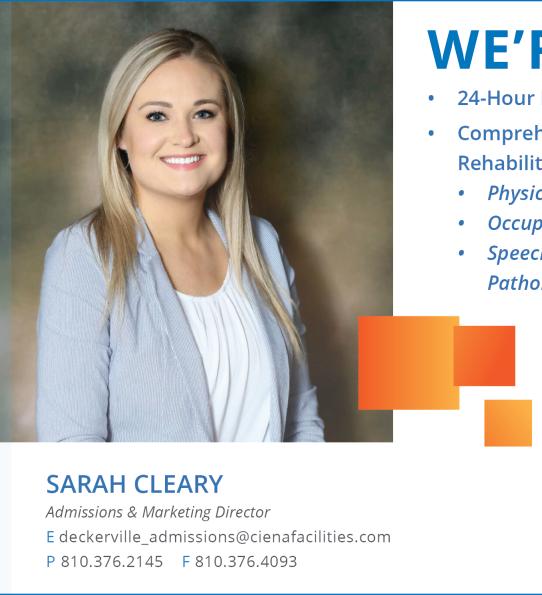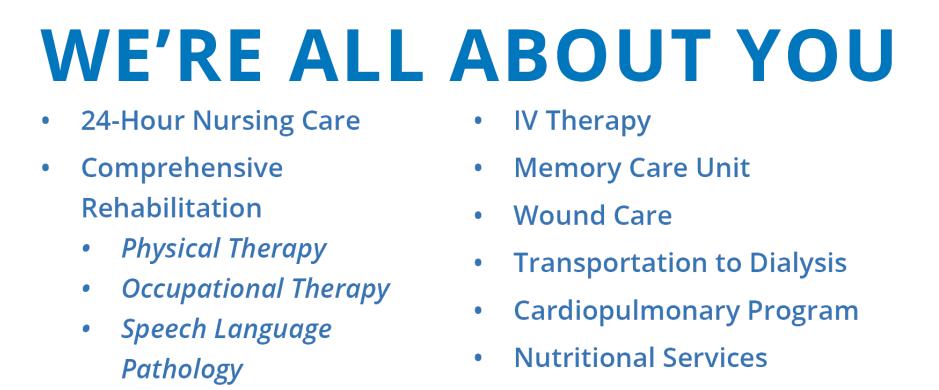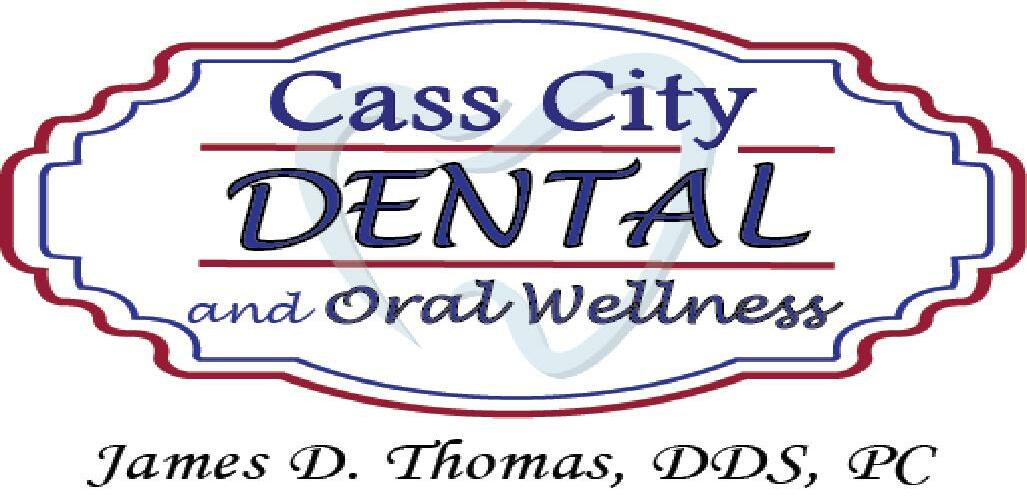












Parties with family and friends, concerts, movies, and sporting events now fill calendars, much as they did before the world learned of COVID-19. Even though the novel coronavirus that arrived in late 2019 remains a concern, the vast number of people who have been vaccinated and boosted, or have developed antibodies, has allowed people to return to a more normal life. While COVID-19 once was a major safety concern for party hosts and hostesses, it’s not the only safety issue that can affect social activities. When hosting any gathering — whether it’s an intimate cocktail party or a backyard bash — hosts can heed these safety guidelines. Pace/control alcoholic beverages

The National Highway Traffic Safety Administration says every day 32 people die in drunkdriving crashes in the United States. That equates to one person every 45 minutes. These deaths are all preventable, and one of the simplest ways is to limit opportunities for people to drive drunk. Party hosts are responsible for monitoring guests’ drinking. Spacing out drinks and limiting access to alcohol can keep guests from becoming overly
intoxicated. Stop serving alcoholic beverages two hours before the party ends so there’s little opportunity to drive intoxicated. Provide alternative transportation to those guests who still may be unsafe to drive. Make safety products available
Even though COVID-19 is no longer first and foremost on the minds of people, it has not completely vanished. New variants of the virus are still developing, and many of these spread much more easily than prior versions, even if they produce milder symptoms.
Recommendations to stop the spread continue to be relevant today. Wipe down surfaces, mask up if you will be in close contact, improve ventilation, and encourage regular handwashing or use of hand sanitizer in the party space.

Opt for single-serve
Communal buffet dishes mean crowds are scooping from the same pan or pot. To reduce the potential spread of any unwanted pathogens, consider offering pre-portioned items that guests can grab and go. Food already portioned out on to small plates or in cups can reduce the risk of cross-contamination for those with food allergies.
Minimize entry points Avoid the pitfalls of an invite-only event becoming a free-forall, which can occur when teens or young adults host parties. Have one entry and put a responsible adult in charge of checking invitations at the door. Similarly, have a plan in place should any guests get out of hand. Safety should be a concern at any party, large or small. Some simple strategies can ensure everyone has a safe and fun time.
Financial donations and volunteering are popular ways to give back to nonprofit organizations. However, there are many additional ways to give back, including donations that can help save lives. Donating blood can be a worthwhile effort for someone looking to make a difference. The U.S. Department of Health and Human Services says every two seconds someone in the United States needs blood or blood products. When people think of donating blood products, they may think about donating whole blood. However, there’s a need for other components, namely plasma. Here’s a deeper look at what’s involved in the blood and plasma donation process.
Blood versus plasma Whole blood donations
include donating all four blood components: red blood cells, white blood cells, platelets, and plasma. Whole blood is used to treat blood loss that occurs during an injury or surgery. Patients in need of plasma may have cancer, immunodeficiencies or rare diseases that can benefit from plasma treatment. Additionally, there is a global demand for plasmaderived medicine, such as immunoglobulin, according to the Immune Deficiency Foundation. One patient who needs Ig for a year requires 130 to 1,200 plasma donations to procure enough plasma. Plasma is separated from whole blood, and there is not enough plasma in the whole blood supply to cover the demand for whole blood as
well as plasma separately.

Donors must meet some eligibility requirements, according to the American Red Cross.



Blood: Blood can be donated once every 56 days. Individuals must be in good health, at least 16 years old in most areas, and must weigh at least 110 pounds.

Plasma: All blood types can give plasma, but only AB plasma type is universal. People with AB blood are considered elite plasma donors. Plasma can be donated once every 28 days. Good health is required and donors must be at least 17 years old and weight no less than 110 pounds.

Donors also can donate red
blood cells and platelets separately from whole blood or plasma. There are different eligibility requirements for these blood components.

It takes roughly 60 minutes to make a whole blood donation, says HHS. Plasma donation wait times can vary. An initial donation can take about two hours, while subsequent donations may be 90 minutes.
Apart from the feeling of satisfaction from helping others, donating blood can help save the lives of up to three people. Since plasma donations are so important, and there is a greater time commitment to donation,
some plasma donors are financially reimbursed.


Individuals interested in donating blood products are urged to maintain a healthy lifestyle. Twenty-four hours before the appointment, the American Red Cross recommends drinking nine to 13 cups of water, and an additional two cups prior to the donation. Meals full of iron and protein are essential, and caffeine, alcohol, tobacco, and fatty foods should be avoided. Donating whole blood, plasma and other blood products can make a difference in the lives of many. Visit www. redcrossblood.org to learn more about becoming a blood donor.
When individuals retire, they not only walk away from work, but also relinquish thier steady paychecks. For many, retirement can be a potentially risky financial endeavor. Saving for retirement is a great way to mitigate such risk, but unforeseen expenses, such as medical bills, can quickly derail a retirement plan. Many people have a greater need for medical care as they get older. The Fidelity Investments Retiree Health Care Cost Estimate indicates health care can be one of the biggest expenses a person will take on in retirement. The average 65-yearold couple who retired in 2021 in the United States can expect to spend $300,000 on health care and medical expenses during retirement. The financial resource The Street says other studies suggest it’s wise for retirees to plan to spend between $3,000 and $7,700 per year on health care.
Financial advisors warn that relying exclusively on Medicare to cover health care costs
isn’t going to cut it. Benefits under the Medicare program often aren’t enough to pay for all of a retiree’s needs. There may be gaps for chronic treatment of illnesses and specialty treatment for certain conditions. Longterm care services also typically are not covered. It’s important to note that Medicare will cover general doctor’s visits, but it does not cover the cost of deductibles or copays. Individuals need to be proactive and plan for medical expenses in retirement. After housing, healthcare is the most significant expense for retirees. Health spending accounts and longterm health insurance are two options for people looking for ways to cover their health care costs in retirement.

As of 2022, people can contribute up to $3,650 for an individual or $7,300 for a family per year into a health savings account. After age 55, an additional $1,000 per year is allowed. Money in an HSA grows tax-free and it can be spent tax-free on qualified medical

expenses. Once a person has Medicare, he or she no longer is eligible to contribute to the HSA, but can use money already in the account to pay for qualified medical expenses that are not covered by Medicare. Long-term care insurance is another option, and many people invest in such an account during their 50s or 60s. The earlier an individual enrolls in a program, the lower the premium. According to Personal Capital, most policies will not start until a patient has needed assistance for 90 days and other qualifying guidelines are met. Generally speaking, long-term care insurance also is use-or-lose. If there’s never a need to use the insurance, it will not be refunded. This is a risk that certain people are willing to take.
In addition to these options, people may consider gap insurance programs. When putting together a retirement plan, it can be wise to speak with financial advisors who can customize products based on their expected needs.
humans, animals can develop and spread illnesses. People who welcome pets into their homes may be concerned about transmission from pets to people as well as other animals to pets. To alleviate some fears, here’s some information about disease transmission among pets, people and other animals.

Heartworm cannot spread from pets to people, and humans rarely get heartworm. Heartworm cannot be caught from another pet like a cold or flu. It only spreads through mosquito bites. Two pets in the same household would each have to be bitten by infected mosquitoes to contract heartworm.

These are parasites that can be found in dogs and cats. The worms’ eggs and larvae are passed from pets through stool. People can get hookworms through the skin by walking barefoot outside (a common reason why dogs tend to be off-limits on beaches during swimming season). Anyone may also accidentally eat roundworm eggs from touching the mouth or eating after inadvertently touching the eggs and failing to wash their hands.
Tapeworm is an intestinal parasite that cats and dogs can get when bitten by an infected flea. However, humans contract it from eating contaminated meats.
Although it’s essentially been eradicated from domestic pet populations, rabies remains a concern among wild animals. A bite or scratch to a human or pet from a wild animal is cause for concern and should be brought to the attention of a veterinarian.
Toxoplasmosis is a parasitic infection in cat feces that doesn’t produce symptoms in healthy adults, but is a concern for pregnant women and their unborn children.
Cryptococcosis and psittacosis Cryptococcosis is a yeast present in bird droppings, especially from pigeons, that can cause pneumonia and meningitis in people with weak immune systems.
Individuals with pet birds should be aware of psittacosis, which is a bacteria that can infect pet birds. Someone who cleans the cage can become infected after breathing the dust from accumulated droppings. Symptoms include coughing and high fever.
This disease typically spreads through the urine of wildlife. So dogs or cats that spend time outdoors may come in contact with contaminated urine from wild animals, or drink from contaminated puddles. Many vets now immunize against leptospirosis. These are just a few of the illnesses that can affect pets, wild animals and humans. Proper hygiene, medical care and observation of symptoms should be paramount in homes with pets.

Adults must walk a fine line when consuming alcohol. Though some adults may feel impaired after a single drink, many others can still drive safely after enjoying an alcoholic beverage with dinner or during a gathering with friends. Despite that, it’s important that adults behave responsibly and recognize that even a relatively small amount of alcohol can impair their judgment. According to the National Highway Traffic Safety Administration, drivers typically experience some loss of judgment and altered mood even when their blood alcohol concentration is .02, which is well below the legal limit to operate an automobile. When that BAC rises to .05, which also is well below the legal limit, drivers can expect to experience a loss of small-muscle control, a reduction in alertness and even difficulty steering.
And it’s not just alcohol that can affect drivers, as the NHTSA warns motorists taking prescription medications or new medicines to avoid driving until they realize how a given drug affects their judgment, coordination and reaction time.
With so much on the line each time they get behind the wheel, drivers have much to gain from recognizing the physical and mental signs that suggest they should avoid driving after consuming alcohol or taking medication.
Physical indicators
Prescription medications and other medicines can produce a host of side effects, and these are generally listed on product packaging or within the materials people receive when picking up their prescriptions.
The NHTSA notes that even over-thecounter medications can cause side effects such as drowsiness, nausea and blurred vision, each of which can make it unsafe to operate a motor vehicle.
After consuming alcohol, individuals can look for these physical symptoms, the presence of which suggests they are not fit to drive:
• Slower reflexes
• Delayed reaction time
• Slurred speech
• Nausea
• Lack of coordination, including clumsiness, stumbling or a general feeling that balance is off
• Fatigue
Mental indicators
It can be easy for individuals who have
been drinking to make light of mental indicators that suggest they should not drive. Jokes about forgetting how they spent the night might elicit a laugh, but forgetfulness is a key
indicator that someone has consumed too much alcohol to drive safely. Additional mental indicators include:
• Feelings of confusion
• Difficulty understanding
complex ideas
• A loss of inhibition
• Delayed realizations
Alcohol and medication can adversely affect a person’s ability to safely operate a motor vehicle.
Recognition of the physical and mental signs of impairment can increase the likelihood that drivers avoid getting behind the wheel after taking medication or consuming alcohol.

Lung cancer is the second most common cancer worldwide. According to the World Cancer Research Fund International, lung cancer is the most common cancer in men and the second most common cancer in women. But even families affected by lung cancer may be surprised to learn that children are not immune to the disease. Though lung cancer is very rarely found in children, kids can get it. The Centers for Disease Control and Prevention report that cigarette smoking is the number one risk factor for lung cancer, which could be why the disease is so often associated with adults. However, the National Cancer Institute reports that incidences of lung cancer in children could be genetic. According to the NCI, a specific change in the DICER1 gene increases the risk for a childhood lung cancer known as pleuropulmonary blastoma, which forms in the tissues of the lung and pleura (the organs between the lungs). Families with a history of DICER1 syndrome, a rare, inherited disorder caused by a mutation in the DICER1 gene, are urged to speak to a physician about testing children for pleuropulmonary blastoma.

To learn more contact Scott Smith, ATP scott.smith@nsm-seating.com

Women who become pregnant quickly discover that pregnancy involves a lot of testing and monitoring. Routine blood work is part of the procedure, too. Individuals who learn they are Rh negative will likely have to do a little extra during their pregnancies — and possibly after — involving something called a “RhoGAM” shot.
Blood types are broken down into A, B, AB, and O. Each blood type also is classified as positive or negative, which is determined by a protein called the Rh factor. Rh positive blood types have this specific protein present, while Rh negative blood types do not, according to the American Red Cross. Most people are Rh positive.
Rh factor and pregnancy
Rh factor doesn’t typically come into play, except for pregnant women or those undergoing transfusions. This is when a situation called “Rh incompatibility” may occur. It strictly affects the population of pregnant women who are Rh negative.

If the mom is Rh negative
and the biological father is Rh positive, the baby can inherit the dad’s positive Rh factor. This can cause Rh incompatibility, or Rh disease, says the National Heart, Lung and Blood Institute. The Rh negative mom may make antibodies that can fight Rh positive blood cells in the baby’s body, producing various complications, if the blood between mother and child mixes. Complications include fetal anemia, which in turn can cause a lifethreatening condition known as hydrops fetalis. This causes internal bleeding, heart and kidney failure, and shock. Experts say that typically a first pregnancy would be fine, because the mother’s body doesn’t have enough time in nine months to produce significant antibodies to the Rh positive blood to be a concern. However, if a miscarriage occurred prior, or if this is a second or third pregnancy, precautions are taken.
RhoGAM administration
Problems with Rh incompatibility have all but disappeared due to something called RhoGAM, or Rho (D) Immune Globulin. It
is made from donated human blood plasma and is administered in the form of an injection.
RhoGAM tends to be administered between 26 and 28 weeks of pregnancy when the placenta can start to thin. Although unlikely, blood can transfer from baby to mom, says Healthline. It also can transfer after any invasive test of the baby’s cells, such as amniocentesis or chorionic villus sampling. An obstetrician may determine that RhoGAM is needed during pregnancy. The injection is effective for around 13 weeks.
After the baby is born, a pediatrician will test the infant’s blood to determine Rh factor. If the baby shares mom’s negative Rh, then no additional RhoGAM shot is needed. If the baby’s blood is Rh positive, then the mother will need an additional shot 72 hours after delivery, to alleviate future pregnancy complications from antibody production.
Rh factor isn’t much of a concern, unless it pertains to blood transfusions and pregnancy. However, Rh incompatibility can be mitigated with a special shot.
Donating is a great way to help people in need. Whether you’re donating time, money or items such as clothing or furniture, those donations have the potential to change people’s lives for the better.
Perhaps nowhere is the value of donating more palpable and personal than in situations when a healthy person donates part of their bodies to help someone facing a potentially life-threatening illness. Such situations unfold every day when people donate bone marrow. According to the Mayo Clinic, roughly 5,000 people in the United States undergo a bone marrow transplant each year, and such transplants are vital for individuals diagnosed with blood cancers such as leukemia. Knowledge of bone marrow could compel more individuals to become marrow donors.
What is bone marrow?
The Cleveland Clinic notes that bone marrow is the soft, fatty tissue inside
bone cavities. Components of blood, including red and white blood cells as well as platelets, form inside bone marrow.
Why is bone marrow important?
Bone marrow manufactures stem cells and other substances that ultimately produce blood cells. According to the UCSF Benioff Children’s Hospitals, each type of blood cell produced by bone marrow performs its own vital function. Red blood cells carry oxygen to tissues throughout the body while white blood cells help to fight infections. Platelets help blood clot so people stop bleeding when they are cut or injured.
UCLA Health notes that most healthy individuals between the ages of 18 and 44 could be potential blood and marrow stem cell donors, though Be The Match®, which is operated by The National Marrow Donor Program®, notes that
donors on the bone marrow registry have their status changed to “inactive” upon their 61st birthday. People interested in becoming donors can join the program, be tested and add their names to the list if they’re ultimately approved as donors.
Why are some people excluded from becoming bone marrow donors?
Be the Match® is operated by the NMDP and manages the marrow registry. The organization notes that there are marrow donation guidelines available through their website that shed light on who cannot be a donor. For example, Be The Match changes donors’ status to “inactive” at 61 to protect the donors. Individuals who have been diagnosed with HIV/AIDS cannot be donors. Even those who have received a tattoo within the previous 12 months will be carefully evaluated for infections before they are approved as donors. A more complete rundown of issues that could exclude some people from becoming marrow

donors is available at bethematch.org.
Can someone live without bone marrow?
The Cleveland Clinic notes that the absence of bone marrow can be fatal.
Are all donors matches to anyone in need?

Just because someone is on the bone marrow registry does not mean they are a match with anyone who needs a bone marrow transplant. The more diverse the registry is, the more likely those in need will find a match. That underscores how important it is to increase the number of people on the bone marrow registry, which the Mayo Clinic notes already includes 12 million donors in the United States.
Bone marrow donors save lives every day. More information about becoming a bone marrow donor can be found at bethematch.org.



People choose to follow a vegan lifestyle for a variety of reasons. Some may be concerned about livestock’s effects on climate and the environment in general, while others have strong feelings about the way animals are treated during the food production process. Still others may have received information from their doctors that a plant-based diet can help reduce their risk for diabetes, heart disease and certain cancers. Whatever the reason for embracing a vegan lifestyle, individuals should do their research first so their transition is safe and smooth.


Being vegan is different from vegetarian eating. Rather than simply avoiding meat like vegetarians, vegans do not bring any animal products into their homes. This includes eggs, milk, cheese, and any other ingredient derived from animal sources, including honey. Vegan.com says a vegan diet never contains any byproducts of animal agriculture, such as lard, gelatin or whey.
Certain foods are staples of a vegan diet. These include grains, beans, nuts, tofu, tempeh, nut milks, fruits and berries, and vegetables.
In addition to these items, a greater number of vegan-friendly products are available to help those who are vegan enjoy their favorite indulgences without compromising their ideals. These include vegan chocolates, “cheeses,” coffee creamers, and more. Most natural food stores and even mainstream supermarkets sell at least one vegan alternative for every popular non-vegan food. Vegan food companies continue to produce delicious and innovative items to make vegan living even more convenient.



Those who want to switch to vegan eating can
schedule chats with their doctors about the pros and cons of removing animal products from their diets. This is a safer way to know if there will be any medical complications to doing so. Avoiding animal-based foods does not typically lead to any negative consequences, though individuals may need to rely on supplementation to ensure they get enough vital nutrients in their diets.

Start gradually



Rather than focusing on what a person can’t eat, he or she can be inspired by all of the new products to try and recipes to make at home. This can make veganism seem less like a
sacrifice and more like an active choice. One can try switching over for a few weeks to see how he or she feels. Dr. Neal Barnard of the Physicians Committee for Responsible Medicine recommends starting by collecting a couple of plantbased recipes first and trying them out over the course of one to two weeks. Then follow that with a three-week commitment to veganism.

The transition to a vegan lifestyle can be made gradually and with purpose for those who no longer want to consume animal products.

Caregivers are called on to step in for any number of reasons. Some serve as companions to the elderly, while others assist those with debilitating diseases like cancer. While many caregivers are professionals hired for their services, a good number of caregivers are informal — meaning they are family members or friends assisting loved ones. Even though they are trying to help others, caregivers often must confront a form of stress known as caregiver burnout. The Cleveland Clinic states this stress is marked physical, emotional and mental exhaustion that occurs in caregivers. This burnout may lead to fatigue, anxiety and depression. While there may not be a way to completely eliminate all caregiving stress, there are some ways to prevent burnout. Utilizing various resources can be a start. Here’s a look at some available caregiver resources.
• Trusted friend: Find

someone you trust with whom you can discuss your feelings, including any frustration you may feel. This can be a neighbor or a coworker with whom you feel comfortable sharing personal details.
• Support groups: Support groups can provide safe spaces to vent with others who are in the same boat. Houses of worship may host support groups, or you can find out about meetings through hospitals or from personal doctors. The National Family Caregiver Support Program was established in 2000 and provides grants to states and territories to fund a range of support that assists family and informal caregivers to care for their loved ones at home for as long as possible. Other groups include Caregiver Action
Network and Family Caregiver Alliance.
• Respite care services: Respite care services provide temporary breaks for caregivers by enabling the sick, elderly or injured to stay in care facilities for anywhere from a couple of hours to a few days. Some respite care services will provide short-term, in-home care as well.
• Professional therapist: Many therapists are trained to counsel individuals who have particular issues. Some may specialize in grief or even caregiver needs. Utilize their services if speaking with a confidante is not enough.

Caregivers often put the needs of others before their own. But they may need a little help along the way, which is where caregiver resources can come into play.

A lot of changes have happened over the last couple of years. I’m amazed to see how many people have still not re-established good oral care routines that involve professional dental care. Are you one of these people?
Consistent oral care at home - coupled with regular professional oral wellness care at your dentist can lead to a healthier mouth. Lack of good routines and not visiting the dentist can lead to a lot of pain, and sometimes require costly procedures to correct.
Some things you can do at home:
- If you smoke or chew tobacco, consider quitting.
- Vaping is not much better for you than smoking.
- If you drink sugary drinks like soda, energy drinks, sports drinks, sweet tea, and even coffee with sugar, you are putting yourself at risk for tooth decay (cavities). Consider drinking less of these, and drink water
Some things we can do with you:
- Regular oral cancer screening.
- Profesional dental cleanings and treatment for gum disease.

- Dental laser gum treatments.
- Comprehensive diagnostic and restorative care for all of your dental needs.